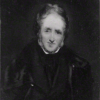
Linda M. Shires, “Color Theory—Charles Lock Eastlake’s 1840 Translation of Johann Wolfgang von Goethe’s Zur Farbenlehre (Theory of Colours)”
The nineteenth century witnessed major developments in color theory, pigment manufacturing, and painting techniques. In 1840, Charles Lock Eastlake—painter, art scholar, and collector—translated Goethe’s 1810 Zur Farbenlehre or Theory of Colours as a handbook and a history, with his own erudite notes, to aid British painters. The volume aimed to offer nineteenth-century artists a deeper education in color than Royal Academy training, which still emphasized imitation of old masters with instruction in composition and line. Eastlake also aimed to restore Goethe’s Aristotelian emphasis on the eye’s perception of color. A focus of debate among scientists and artists, the anti-Newtonian Theory of Colours seriously engaged painters as different in style as J. M. W. Turner and Holman Hunt, both of whom were fascinated by color and nature as seen by the eye. Moreover, Eastlake’s learned notes remained unrivaled for their detailed knowledge of Aristotelian natural science and optics, early technical treatises on painting, and specific Renaissance paintings. Charles Lock Eastlake, a growing authority in the art world of London, went on to be knighted (1850), elected President of the Royal Academy (1850), and appointed the first Director of the National Gallery of Art (1855).

Linda M. Shires, “On Color Theory, 1835: George Field’s Chromatography“
George Field’s Chromatography, or, A Treatise on Colours and Pigments, and of Their Powers in Painting, &c. (January 1835) examines the properties of pigments, relations among colors, and color as a symbolic and moral force. While the color theories of Chromatography dated quickly, this seminal book’s importance to a material history of color and oil painting remains undisputed.
